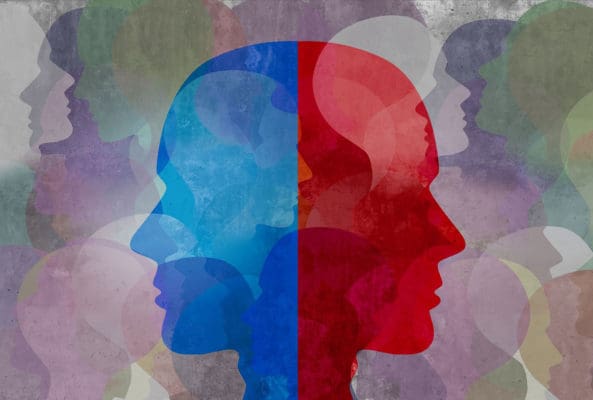Medical Editors: Dr. David Cox, PhD, ABPP and Hilary Morris, MA, LPC
What is somatic psychotherapy?
Somatic practices raise awareness in the body, central nervous system, and the relationship between how certain thoughts, feelings, and events link to sensations in the body. Somatic work teaches individuals to connect with what they notice in their body. Some questions clients are asked in a somatic psychotherapy session include:
- What are you feeling?
- Where do you feel it in your body?
- If this part could talk, what would it say?
- Is there a truth needing to be expressed related to this emotion?
A typical somatic presentation of a panic episode includes racing heart rate, sweating palms, tightness in the chest and throat, and tension in the stomach. When processing emotional trauma, somatic psychotherapy uses the immediacy of emotion in the session to disrupt and transmute trauma responses and to draw attention to where in the body the emotion is presenting. By bringing awareness to the somatic presentation of emotional responses during a post-traumatic stress disorder (PTSD) episode, individuals can learn how and where their trauma manifests in their physical body.
When processing traumatic experiences, somatic therapies bypass typical cortical processing and urge the client to draw attention to how their body reacts when a memory arises. Somatic therapy is theorized to access subcortical limbic regions of the brain. The client “turns off the mind” and tunes into the “deep wisdom” within their body.
Eye-movement desensitization and reprocessing (EMDR) is an evidence-based somatic therapy often used in the treatment of PTSD. Somatic Experiencing and Brainspotting are also quickly gaining popularity. EMDR is a desensitization therapy and works by activating traumatic memories and initiating bilateral stimulation through eye movements, tactile stimulation, or audio stimulation. This bilateral stimulation is believed to facilitate interhemispheric communication and down-regulate the limbic response (such as anxiety, fear, panic, and distress) commonly associated with traumatic memory recall. Eventually, the client may access the memory without being overwhelmed with typical PTSD symptoms (like panic, flashbacks, racing heart rate, and dissociation).
Because of the potential activation level of EMDR and some other types of experiential treatment, clients may drop out or discontinue therapy prematurely. This is where psychedelic therapy can help.
Psychedelic therapy and PTSD
PTSD begins with an exposure to actual or threatened death, serious injury, or sexual violence. The Diagnostic and Statistical Manual of Mental Disorders (5th ed; DSM-5; American Psychiatric Association, 2013) outlines diagnostic criteria of PTSD and includes re-experiencing of the event (sometimes through nightmares or flashbacks), avoidance of stimuli related to the event, and increased arousal levels.
MDMA
3,4-Methylenedioxymethamphetamine (MDMA) is being studied to aid in the treatment of PTSD and is currently in Phase 3 of clinical trials. PTSD specialist, Bessel Van Der Kolk, MD, believes emotional trauma manifests in the body as chronic illness, pain, anxiety, or depression. He believes in identifying and treating root causes over providing a band-aid to symptoms. Van der Kolk is an advocate for somatic experiencing and EMDR. He is the Principle Investigator for the Multidisciplinary Association for Psychedelic Studies (MAPS) MDMA trials in Boston. He is also an advocate for MDMA, ketamine, and ayahuasca treatments for PTSD. Van der Kolk writes:
“Nobody can ‘ treat’ a war, or abuse, rape, molestation, or any other horrendous event, for that matter; what has happened cannot be undone. But what can be dealt with are the imprints of the trauma on body, mind, and soul: the crushing sensations in your chest that you may label as anxiety or depression…The challenge of recovery is to reestablish ownership of your body and your mind — of yourself.“
Ketamine
Research on ketamine to treat PTSD is limited; however, one study observed a decrease in the avoidance symptom after a series of six ketamine infusion sessions. Another study found a rapid reduction in core PTSD symptoms. Ketamine can assist in fear extinction and improve distress tolerance around memory reprocessing. More research is emerging through the off-label use of ketamine for PTSD.
As noted, there exists some hesitation for its use based on the fact that it may cause transient dissociation; however other studies suggest it may help increase overall resilience levels in those overcoming symptoms (including dissociation) of PTSD. Other studies suggest it may help treat symptoms of anxiety in those diagnosed with major depressive disorder or bipolar disorder. Since evidence is limited to using ketamine in the treatment of PTSD, it is important to screen practitioners appropriately.
Ibogaine
Ibogaine is a naturally occurring psychoactive substance found in the root bark of Tabernanthe iboga and a few related species in Africa. This dissociative psychedelic has positive anecdotal claims for the treatment of PTSD, but research is very limited. One observational study on U.S. Special Operations Veterans with psychological trauma and signs of cognitive impairment explored using ibogaine followed by 5-meO-DMT. The results showed an overwhelming decrease in symptoms of PTSD, as well as an overall improvement in well-being in day-to-day life for the study participants.
In 2020, researchers at the University of California, Davis, synthesized tabernanthalog (TBG), an ibogaine analog that mimics ibogaine without the cardiotoxicity or oneiric dream state, but retains ibogaine’s neurobiological benefits. In a study on rats, TBG changed the neuronal structure of areas in the brain that are linked to PTSD, anxiety, and depression, suggesting an analog capable of treating more than one disorder. TBG also showed positive results with opiate and alcohol self-administration.
Somatic therapy and psychedelics
Ibogaine, ketamine, and MDMA all can assist in the treatment of PTSD. The mechanism is unique with each medicine and assists in the trauma resolution process.
Essentially, trauma is a learned response that “hijacks” the body and sends an individual quickly into a state of panic or hyperarousal. Somatic and psychedelic therapies help to re-pattern the conditioned trauma response to recreate different neural pathways and body-based responses. Psychedelic therapy can rapidly bring up memories, life experiences, or emotions with the added benefit of nervous system suppression and reduced blood flow to the amygdala and hippocampus. The psychedelic experience creates a powerful disruption in the conditioned trauma response. This creates reduced physiological and emotional activation around the distressing memory. One hypothesis for the mechanism of action with psychedelic-assisted psychotherapy includes enhanced rapport between patient and therapist, improved synaptic and neural plasticity, memory reconsolidation, and increased emotional distress tolerance.
Somatic and psychedelic therapies both involve a loosening of control, letting go of stories or narratives around emotional traumas, and opening up to the natural healing process. The body intuitively knows how to heal itself. For example, if someone gets a papercut, the body will instinctively know how to heal itself from the cut. Psychological healing works similarly. Sometimes constructed narratives or schemas can reinforce maladaptive thoughts or beliefs about oneself surrounding the trauma. Various psychotherapy techniques, somatic and psychedelic therapies can bring these disillusioned thoughts to the surface so individuals can create competing rational statements.
Ketamine Assisted Psychotherapy (KAP) involves engaging in psychotherapy while the client is administered ketamine, either by intramuscular injection, intravenous injection, or through an oral solution in the form of a lozenge, or troche. During KAP, clients report high levels of somatic awareness as they have a temporary glimpse of the body and central nervous system outside of the traditional conditioned pattern. For example, a client who constantly feels panic and anxiety manifesting as tension in the chest may experience relief in the tension while under the influence of the ketamine. These treatments can also increase fear extinction, may enhance synaptic and neural plasticity, and minimize long-term manifestations of stress.
Psychedelics and Embodiment
A simple definition of embodiment is bringing awareness to the body and the relationship between bodily shifts with emotional, physical, and cognitive states. Embodied concepts feel “true” in the body. While people usually desire a stronger sense of trust and confidence in themselves, limiting beliefs or emotional trauma can be inhibitory. People with PTSD often believe their bodies are not safe and that they are in danger. Somatic and other therapies help identify beliefs around PTSD episodes (“I am not safe,” “I am in danger,”) and also urge the client to connect with the physiological presentation of these emotions.
Psychedelics are believed to promote neuroplasticity, which is the brain’s ability to form and reorganize synaptic connections to create new learning. The enhanced neural plasticity of the psychedelic experience helps the client reframe the experience and response of the event or themselves. They may learn to down-regulate their nervous systems and feel a sense of safety and peace in their bodies.
Psychedelics also help re-pattern and re-template conditioned nervous system responses around trauma cycles. This can help individuals reclaim their bodies as “safe” rather than in a constant state of threat or hypervigilance. Psychedelics combined with psychotherapy, can help clients access traumatic memories with the added benefit of a reduced central nervous system response. This occurs when repressed memories arise and clients can access these memories with more openness and compassion and reduced levels of physiological and emotional activation.
Embodiment with psychedelic therapy also increases the connection between mind, body, and spirit. Lily Ross writes in an article for the Multidisciplinary Association for Psychedelic Studies (MAPS), “I feel now the urgency of claiming my body as divine.” She describes this experience as, “slowly sinking into the luscious and sensual wonders and wisdom of the body.”
Somatic Therapy as a Psychedelic Integration Tool
Integration is a term often used in the psychedelic community. It refers to taking the most important lessons from a psychedelic experience and learning how to apply them to daily life. It also refers to the further processing of challenging emotions or trauma memories that came up during the experience so that the participant can move forward in the healing process.
Without integration, old pathways and patterns can reemerge. Psychedelic experiences can be extremely challenging, and what some people label as “a bad trip” is often lacking the proper integration tools to process the experience. Others may notice discomfort in the body or slower recovery as a result of trauma resurfacing. Without proper integration, these confusing body cues can be missed opportunities for healing.
What people do after a psychedelic treatment may be as important to long-term efficacy as the psychedelic experience itself. Juliana Mulligan, an ibogaine integration specialist, shared her thoughts on ibogaine and somatic experiencing as an integration tool:
“Ibogaine treatment can begin a process of reconnecting to the body, but traditional therapy used post-ibogaine is often unable to fully support this process. Modern mental health treatment focuses on the mind and emotions as if they were a separate entity from the physical body. While working with a traditional therapist post-ibogaine can be immensely helpful, there must be some kind of work on the body and on the places in the body where trauma and emotions are stored. Somatic experiencing therapy is one technique that supports bridging this gap through the simultaneous use of talk and touch.”
Mulligan’s thoughts can apply to other types of psychedelics, not just ibogaine. Adding in integration therapy or other forms of support in the days following the psychedelic experience can support neural plasticity and recreate new thought and behavioral patterns and sustain clinical gains in treatment.
Mulligan also mentions somatic experiencing, but this can also apply to other forms of somatic therapy, such as EMDR. EMDR has been shown to be as effective as cognitive-behavioral therapy (CBT). CBT and other PTSD treatments have a high rate of drop-out before completion; having different modalities of treatment so that people with PTSD can find what works best for them is important. Evidence of somatic experiencing is scarce, but one randomized controlled outcome study showed a forty-four percent effectiveness rate in an environment where ongoing terrorism occurred. An uncontrolled study of PTSD in natural disaster survivors in Thailand and India reported somatic therapy to be effective in reducing PTSD symptoms by sixty-seven percent and ninety percent in two groups, and maintained reduction at ninety percent for both groups. However, the lack of a control group limits the strength of this study. Anecdotally, in the case of psychedelics and somatic integration techniques, participants report that the two can go well with each other.
Psychable’s online directory
Take a look at Psychable’s online directory to help in your search for a somatic or embodiment practitioner or psychedelic-assisted therapist in your area!








